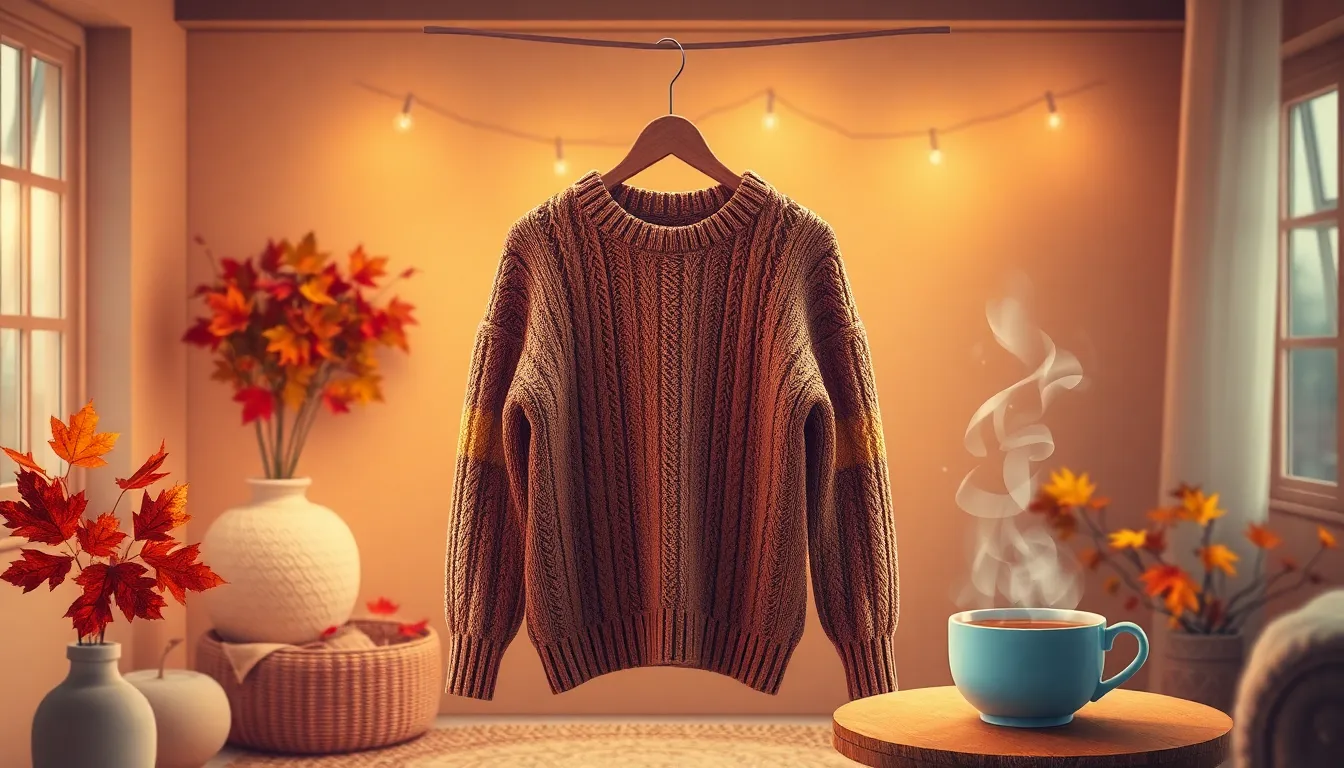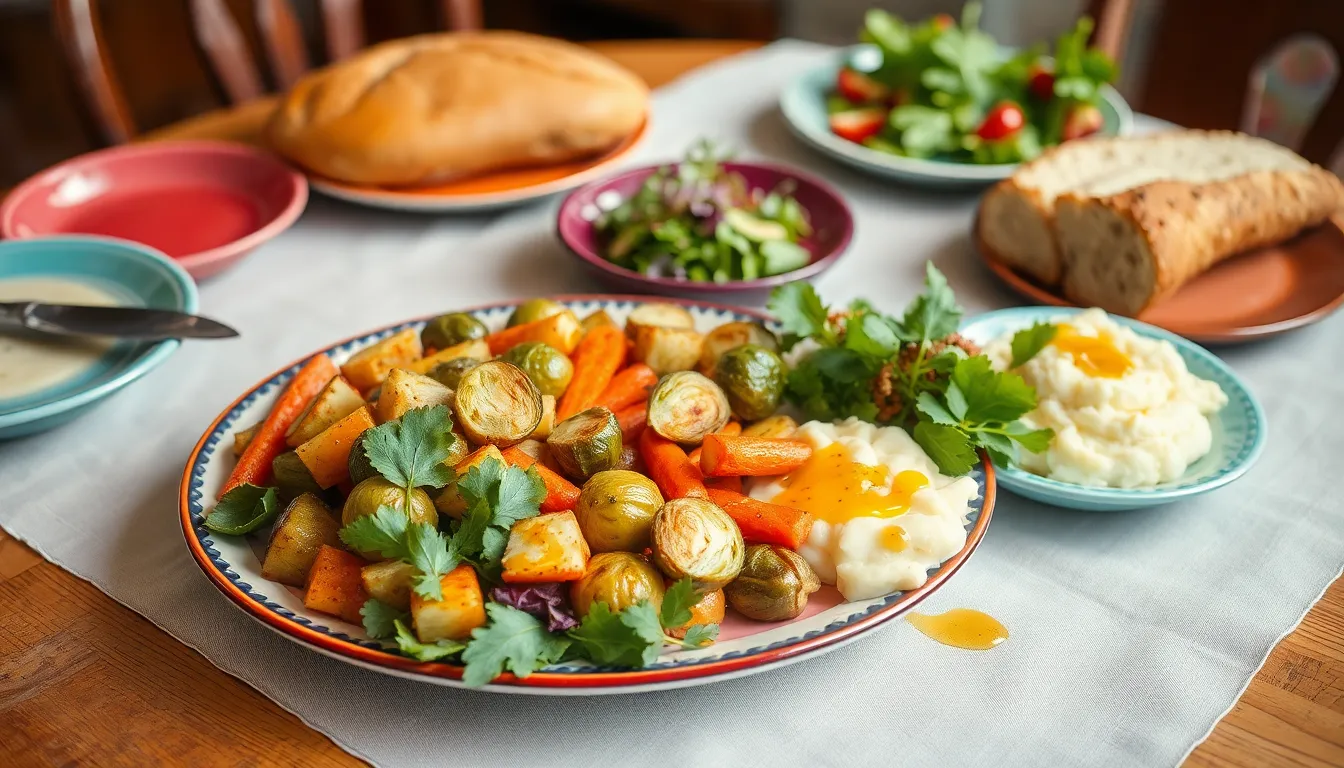In England, the word “jumper” might just spark a debate hotter than tea versus coffee. For the uninitiated, a jumper isn’t a high-flying athletic move but a cozy, knitted garment that wraps you in warmth faster than you can say “brrr.” Picture this: you’re strolling through a quaint English village, and suddenly, the chill of the weather hits you. What do you reach for? That trusty jumper, of course!
But don’t let its simplicity fool you. The jumper is a fashion staple that has transcended generations, from the classic designs of yesteryear to today’s trendy styles. In a world where style meets comfort, understanding what a jumper is can elevate your wardrobe game. So, whether you’re planning a trip to the UK or just curious about this charming piece of clothing, let’s unravel the delightful mysteries of the English jumper.
Table of Contents
ToggleWhat Is a Jumper in England?
A jumper in England refers to a knitted garment worn over the upper body. Often made from wool or cotton, it serves both comfort and warmth. Initially, the term was used in the 19th century, when the garment gained popularity among various social classes. Different styles exist, ranging from crew necks to v-necks, each catering to diverse tastes.
Materials play a significant role in jumper construction. Wool provides insulation, while cotton offers breathability. Some jumpers feature patterns or designs, enhancing their aesthetic appeal. Popular patterns include argyle, stripes, and fair isle.
Cultural significance surrounds jumpers in England. They often represent personal style and can be found in casual and formal settings. Many people wear jumpers during winter months, showcasing them during social gatherings and family events. Additionally, fashion brands continually innovate, introducing contemporary designs that resonate with modern trends.
Taking care of jumpers involves specific washing instructions. Dry cleaning is recommended for delicate fabrics, while some can be machine washed on a gentle cycle. Proper care extends the life of these garments, ensuring that they remain a staple in one’s wardrobe for years.
The jumper stands as more than just clothing in England. It’s a blend of fashion and practicality cherished across generations. Understanding this garment enhances appreciation for its role in English culture.
History of Jumpers

Jumpers have a rich history in England, reflecting both functionality and fashion. These knitted garments trace back to the 19th century as essential clothing items during colder months.
Origins of the Jumper
The jumper originated in the Channel Islands as a garment for fishermen. Wool served as the primary material, providing warmth and durability. Knitting techniques were passed down through generations, leading to distinctive patterns and styles. By the early 20th century, jumpers gained popularity beyond utilitarian use, marking their transformation into everyday fashion.
Evolution Through Decades
The 1920s saw the introduction of jumpers featuring intricate designs, appealing to the fashion-forward. Throughout the 1950s, styles shifted toward simpler silhouettes, becoming staples in casual wear. In the 1980s, vibrant colors and oversize fits brought a pop culture influence, while the 1990s embraced minimalism with understated designs. Each decade contributed to the diverse variety seen in today’s jumpers, making them timeless pieces in wardrobes.
Types of Jumpers
Jumpers come in various styles and materials, offering options for different preferences and occasions. Understanding these types can help in choosing the perfect piece.
Sweaters Versus Cardigans
Sweaters typically refer to pullovers with no fastening. These garments often include crew neck or v-neck styles, ideal for layering. Cardigans, on the other hand, feature an open front and often have buttons or zippers. They provide easy on-and-off versatility, making them suitable for fluctuating temperatures. Both styles cater to different fashion choices, with sweaters offering warmth and cardigans enhancing layered looks.
Material Variations
Jumpers are crafted from a range of materials, each providing unique benefits. Wool jumpers offer excellent insulation, making them well-suited for colder climates. Cotton jumpers, known for breathability, work well in transitional seasons. Blends that combine these materials also appear, balancing comfort and warmth. Cashmere, a luxurious option, provides softness against the skin. Understanding these material variations helps consumers choose jumpers that suit their lifestyle and preferences.
Cultural Significance
Jumpers hold a vital role in English culture, reflecting both fashion trends and personal identity. These knitted garments adapt to season changes, making them staples in many closets.
Fashion Trends in England
Fashion trends shaped the evolution of jumpers over the decades. They transitioned from traditional designs to more modern, innovative styles. During the 1960s, bright colors and bold patterns emerged, appealing to the youth culture. The 1980s witnessed oversized jumpers, embraced for their comfort and statement-making aesthetics. Contemporary designs often incorporate sustainable materials, aligning with eco-friendly movements. With varied styles, jumpers remain versatile, easily pairing with jeans for a casual look or skirts for more formal occasions.
The Jumper as a Symbol
The jumper symbolizes warmth and comfort, extending beyond mere practicality. It embodies the essence of personal style, allowing individuals to express their creativity through various designs and colors. In social settings, wearing a jumper often signifies a casual yet put-together appearance. Popularized in literature and film, the jumper evokes a sense of nostalgia, reminding many of cozy family gatherings or memorable outings. Additionally, it’s frequently featured in fashion campaigns, reinforcing its status as a beloved garment in the British wardrobe.
How to Wear a Jumper
Understanding how to wear a jumper can enhance both comfort and style. Jumpers are versatile garments that transition easily from casual outings to more polished looks.
Styling Tips
Choose a fitted jumper for a sleek, tailored look. Layer it over a collared shirt for a smart casual ensemble. Pairing a jumper with tailored trousers creates a perfect balance of casual and professional. Monochromatic color schemes offer elegance while bold patterns make a statement. Accessorize with scarves or hats to personalize the outfit. Footwear choices like ankle boots or loafers complement various jumper styles, making them adaptable for different occasions.
Seasonal Considerations
Wearing a jumper in cool months provides essential warmth without sacrificing style. Light cotton jumpers suit spring and fall, offering breathability as temperatures fluctuate. Opt for heavier wool options in winter for maximum insulation against the cold. Transitioning into summer, layering a lightweight jumper over a tank top works well during chilly evenings. Seasonal colors also play a role; earthy tones fit autumn while vibrant hues brighten winter wardrobes. Jumpers can be endured throughout seasons by simply adjusting the layers beneath.
The jumper stands as a quintessential piece of clothing in England’s fashion landscape. Its blend of comfort and style makes it a favorite across generations. With its rich history and diverse designs, the jumper continues to adapt to modern trends while retaining its cultural significance.
Whether worn casually or dressed up, jumpers offer endless styling possibilities. They not only provide warmth during chilly months but also serve as a canvas for personal expression. As fashion evolves, the jumper remains a timeless staple that bridges tradition and contemporary style, ensuring its place in wardrobes for years to come.






